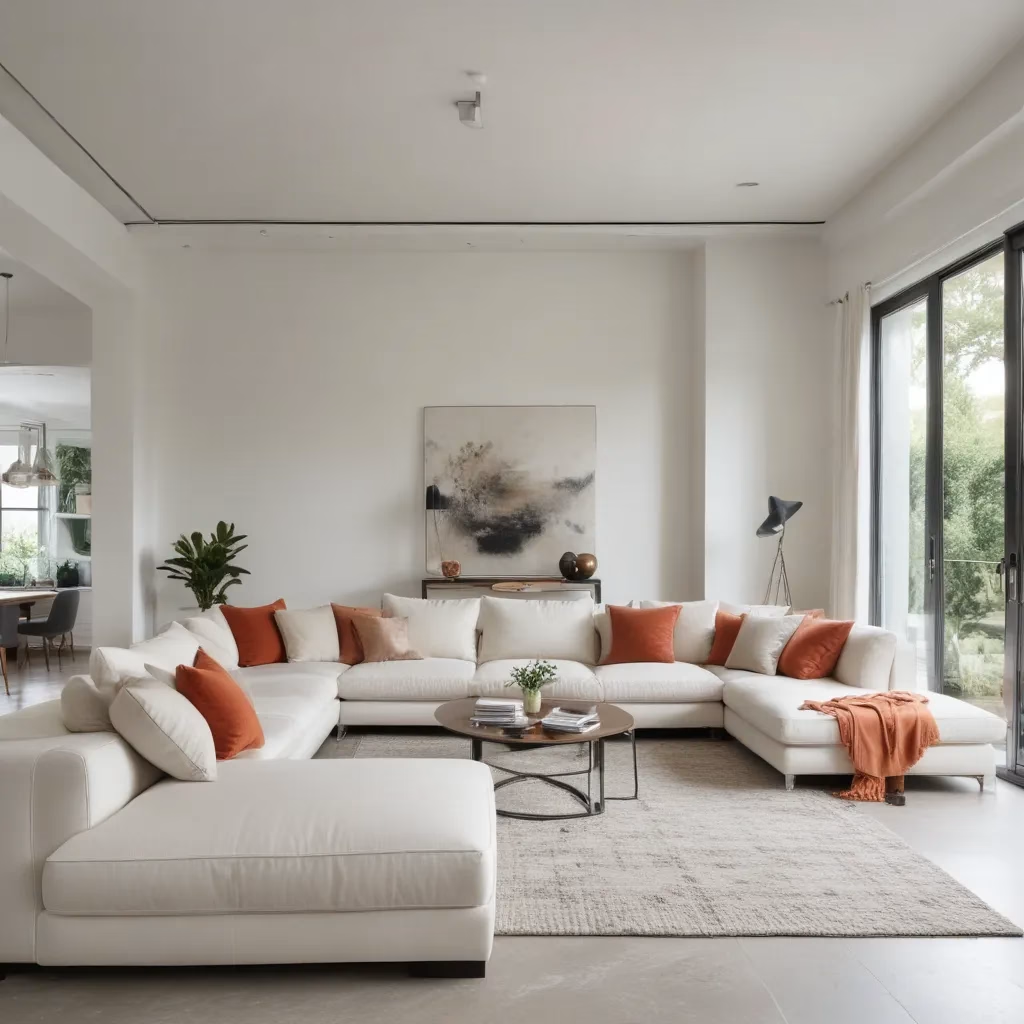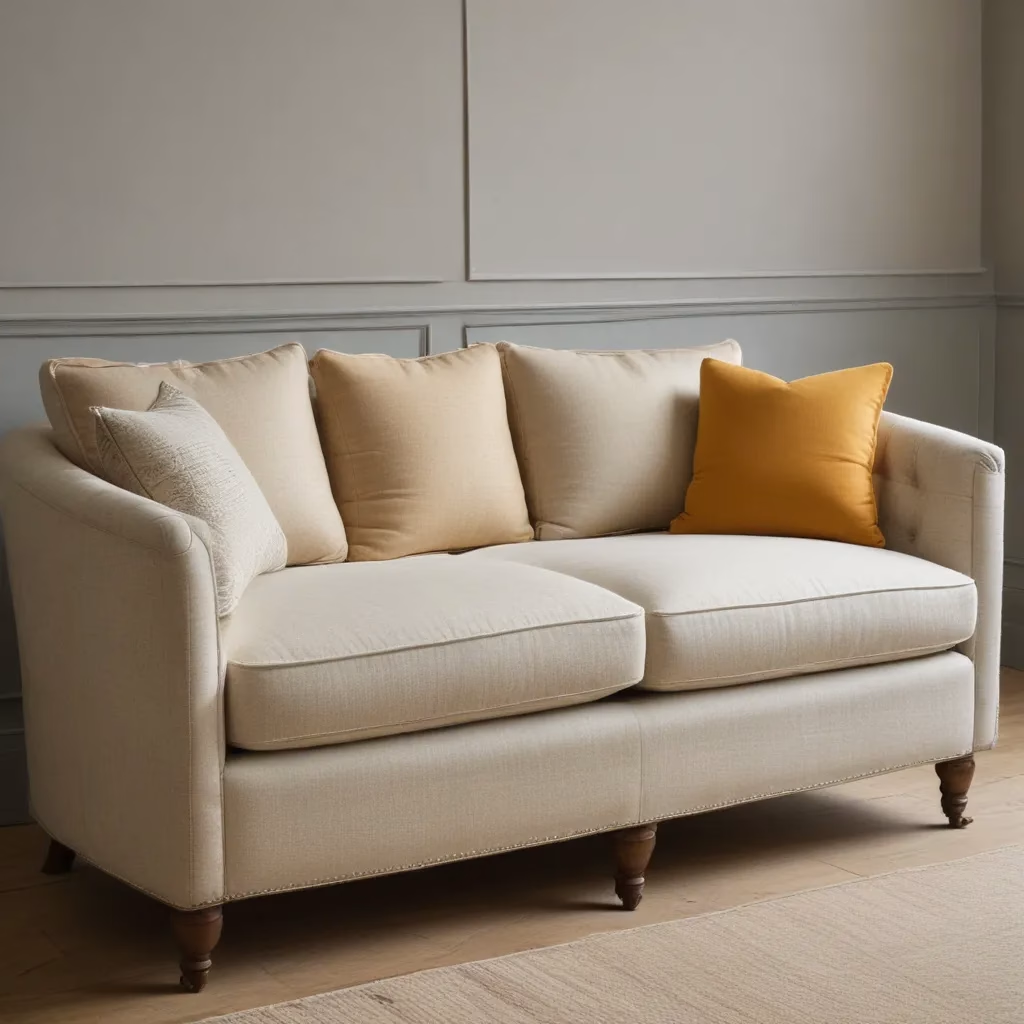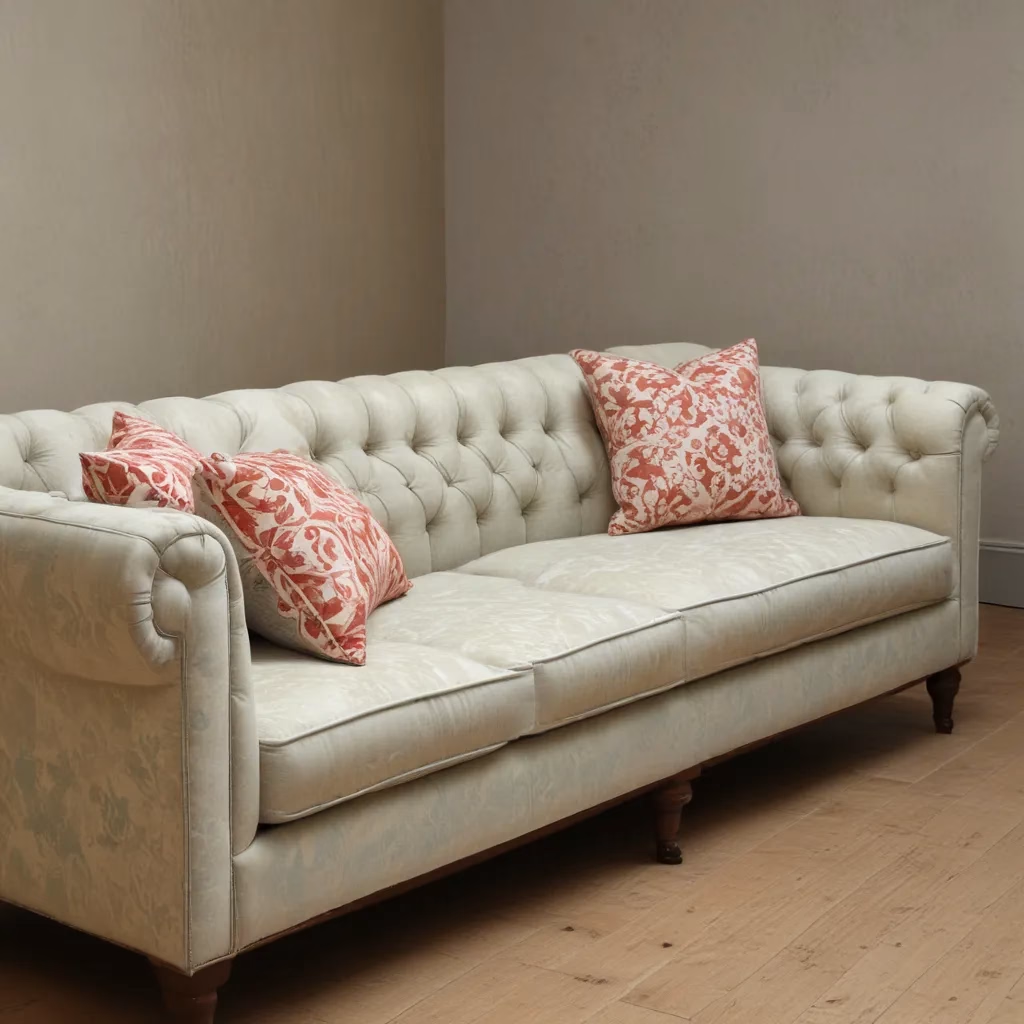
Sofa Placement Strategies for Maximising Circulation in Open Layouts
Crafting an inviting and functional living space within an open-concept home can pose a unique set of challenges. We learned this the hard way… One of the most crucial elements to consider is the strategic placement of your sofa — the centrepiece of any living room. Whether you’re designing a new space from scratch or refreshing an existing open layout, optimising sofa positioning is key to maximising circulation, enhancing flow, and creating a cohesive aesthetic.
Now, this might seem counterintuitive…
Sofa Selection Considerations
The foundation of a successful open-concept layout starts with choosing the right sofa. Its size, shape, and orientation can make or break the overall feel of the space. When selecting a sofa, a few key factors come into play.
Factors for Choosing the Right Sofa
The size of your sofa should be proportional to the room’s dimensions. An oversized model can quickly overwhelm a small area, while an undersized one may get lost in a spacious open layout. Measure your living space carefully and choose a sofa that strikes the perfect balance — large enough to serve as a comfortable gathering spot, yet compact enough to allow for unobstructed foot traffic.
The shape of the sofa also impacts the overall flow of the room. Curved or L-shaped sectional sofas can help define different zones within an open layout, while a straight three-seater or loveseat configuration may suit a more linear space. Consider how the sofa’s form will interact with the room’s other furnishings and architectural elements.
Measuring Your Living Space
Before making a purchase, take precise measurements of your open-concept living area. This includes the dimensions of the room, the placement of doorways, windows, and any fixed furniture or architectural features. Sketch out a to-scale floor plan — either by hand or using digital tools — to visualize how different sofa sizes and arrangements might fit.
Sofa Size and Proportion
As a general rule of thumb, your sofa should occupy around two-thirds of the available wall space. This proportion creates a balanced, harmonious look without overwhelming the room. Adjust the sofa’s size accordingly if you plan to incorporate additional seating, such as armchairs or ottomans, to double-check that the overall layout feels cohesive.
Upholstery and Fabric Selection
The fabric and upholstery you choose for your sofa can have a significant impact on the overall aesthetic and functionality of your open-concept living space.
Fabric Durability and Maintenance
In an open-plan layout, your sofa will likely see heavy use and encounter more wear and tear than in a traditional closed-off living room. Prioritise fabrics that are durable, stain-resistant, and easy to clean. Opt for performance or outdoor-grade upholstery materials if your household includes young children or pets.
Colour and Pattern Coordination
The colour and pattern of your sofa’s upholstery should complement the broader design scheme of your open-concept space. Neutral tones like beige, grey, or navy provide a versatile foundation, allowing you to easily incorporate accent colours through throw pillows, rugs, and other décor. Patterned fabrics can also work well, but be mindful of scale — bold, large-scale prints may overwhelm an open layout, while smaller, more subtle patterns can create a cohesive visual flow.
Texture and Comfort
In addition to aesthetics, consider the texture and comfort of the upholstery. Soft, plush fabrics like velvet or microfiber can contribute to a cosy, inviting ambience, while linen or leather offer a more streamlined, contemporary look. double-check that the sofa’s cushions provide ample support and sink-in comfort to encourage relaxation and lingering.
Living Room Layout Strategies
Mastering the art of furniture placement is crucial for maximising circulation and creating a harmonious open-concept living space.
Arranging Furniture for Traffic Flow
Position your sofa to facilitate smooth, unobstructed foot traffic through the room. Avoid blocking doorways, walkways, or high-traffic areas. Allow for at least 3 feet of clearance around the sofa to double-check that easy movement. If your open layout features multiple access points, consider orienting the sofa to face the primary entry or flow of traffic.
Balancing Seating and Conversation Areas
In an open floor plan, you’ll want to strike a balance between designated seating areas and spaces that encourage conversation and interaction. Arrange your sofa and any additional armchairs or loveseats to create a defined conversation zone — a cosy cluster that invites guests to sit, relax, and engage with one another. Complement this with strategically placed accent chairs or poufs that can be easily rearranged for more informal gatherings.
Integrating the Sofa with Other Furnishings
Seamlessly incorporate your sofa into the broader scheme of the open-concept living space. Pair it with a coffee table that’s proportional in size, and flank it with side tables or end tables to create a cohesive seating arrangement. Use area rugs to ground the sofa and define its boundaries within the larger room. Visually connect the sofa to other key furnishings, such as a media console or bookshelf, to establish a harmonious flow.
Sofa Placement and Positioning
The strategic placement of your sofa can make a significant difference in how the open-concept living area functions and feels.
Optimising Sightlines and Focal Points
Position your sofa to take advantage of the room’s natural focal points, such as a fireplace, entertainment unit, or large window. This allows guests to comfortably view these features while seated on the sofa. Avoid placing the sofa with its back to the room’s main focal point, as this can disrupt sightlines and create a sense of disconnection.
Maximising Circulation and Navigation
Carefully consider the flow of traffic through the open-concept space. Locate the sofa in a way that allows for unimpeded movement around it, with ample clearance for people to pass by without feeling cramped or obstructed. If your layout features multiple access points, position the sofa to create a clear, intuitive path through the room.
Adapting to Open Concept Layouts
In an open-plan setting, the sofa can serve as a visual anchor, helping to define distinct living zones within the larger space. Strategically place the sofa to delineate the living area from adjacent spaces, such as the dining room or kitchen. Use furniture placement and orientation to create a sense of separation without completely closing off the rooms.
Sofa Cleaning and Care
Maintaining the pristine condition of your sofa is essential for preserving its appearance and extending its lifespan, especially in a high-traffic open-concept setting.
Upholstery Maintenance Techniques
Regularly vacuum the sofa to remove surface dirt and debris. Spot-clean any spills or stains promptly using a mild detergent and a damp cloth. For deeper cleaning, consider professional steam cleaning or dry cleaning services every 12-18 months, depending on usage.
Spot Cleaning and Stain Removal
Act quickly when dealing with spills or stains on your sofa’s upholstery. Blot the affected area with a clean, absorbent cloth to soak up any excess liquid. Avoid rubbing, as this can cause the stain to spread. Consult the fabric’s care instructions and use a stain-removing solution specifically formulated for the upholstery material.
Long-Term Preservation of Fabric
Rotate and flip the sofa’s cushions regularly to double-check that even wear and distribution of use. Avoid exposing the sofa to direct sunlight for extended periods, as this can cause fading and premature wear of the fabric. Consider investing in sofa covers or throws to protect the upholstery when not in use.
Styling the Sofa for Comfort
Beyond just function, the sofa can also be a stylistic centerpiece that enhances the overall ambience of your open-concept living space.
Arranging Accent Pillows and Throws
Accessorize your sofa with a thoughtful selection of throw pillows and blankets. Mix and match patterns, textures, and colours to create a visually interesting and inviting display. Arrange the pillows in a balanced, asymmetrical manner to encourage relaxation and casual lounging.
Incorporating Complementary Décor
Use the sofa as a launching point to tie the broader living room design together. Place accent tables or side tables next to the sofa to create a cohesive seating arrangement. Flank the sofa with floor lamps or wall sconces to enhance the overall lighting and ambience of the space. Hang artwork or wall mirrors above the sofa to draw the eye upward and create a sense of depth.
Achieving a Cohesive Design Vision
When styling your open-concept living space, strive for a harmonious, visually unified look. double-check that the sofa’s upholstery, accent pieces, and surrounding décor all work in harmony to create a polished, intentional aesthetic. This attention to detail will elevate the overall appeal of your open-plan living area and make it a truly inviting and comfortable space for family and guests alike.
Furniture Buying Considerations
Purchasing a sofa is a significant investment, so it’s essential to weigh your options carefully and make an informed decision.
Assessing Quality and Construction
Look for a sofa with a sturdy, well-made frame, ideally constructed from solid wood or kiln-dried hardwood. Examine the joints and corners for durability, and check that the springs and cushions provide ample support and longevity. A high-quality sofa may cost more upfront, but it will likely last for years to come.
Budgeting and Cost-Effective Options
Determine your budget for the sofa and other living room furnishings, and explore options that fit within your financial constraints. Midrange and budget-friendly brands can offer great value without sacrificing style or comfort. Consider shopping secondhand or vintage markets for unique, one-of-a-kind pieces that can add character to your open-concept space.
Sourcing and Delivery Logistics
When purchasing a sofa, factor in the delivery timeline and logistics. Local furniture stores or online retailers that offer white-glove delivery services can make the process seamless, ensuring your new sofa arrives safely and is properly installed in your open-concept living area.
Crafting a cohesive, functional open-concept living space begins with the strategic placement of your sofa. By carefully considering factors like size, shape, and upholstery, and integrating the sofa into a well-planned furniture layout, you can create a visually stunning and highly practical living environment that caters to your lifestyle. With these sofa placement strategies in mind, you’ll be well on your way to maximising circulation and elevating the overall comfort and aesthetic of your open-concept home. Visit SofaSpectacular.co.uk to explore our curated collection of high-quality sofas and décor solutions perfect for open-concept living.
Tip: Rotate cushions regularly to maintain even wear



